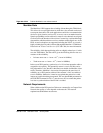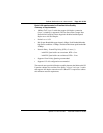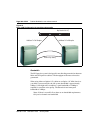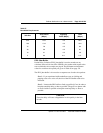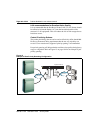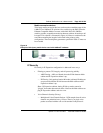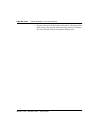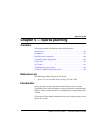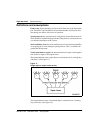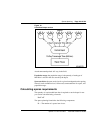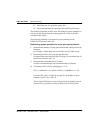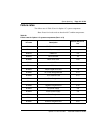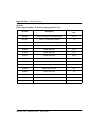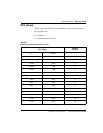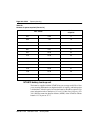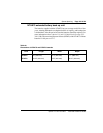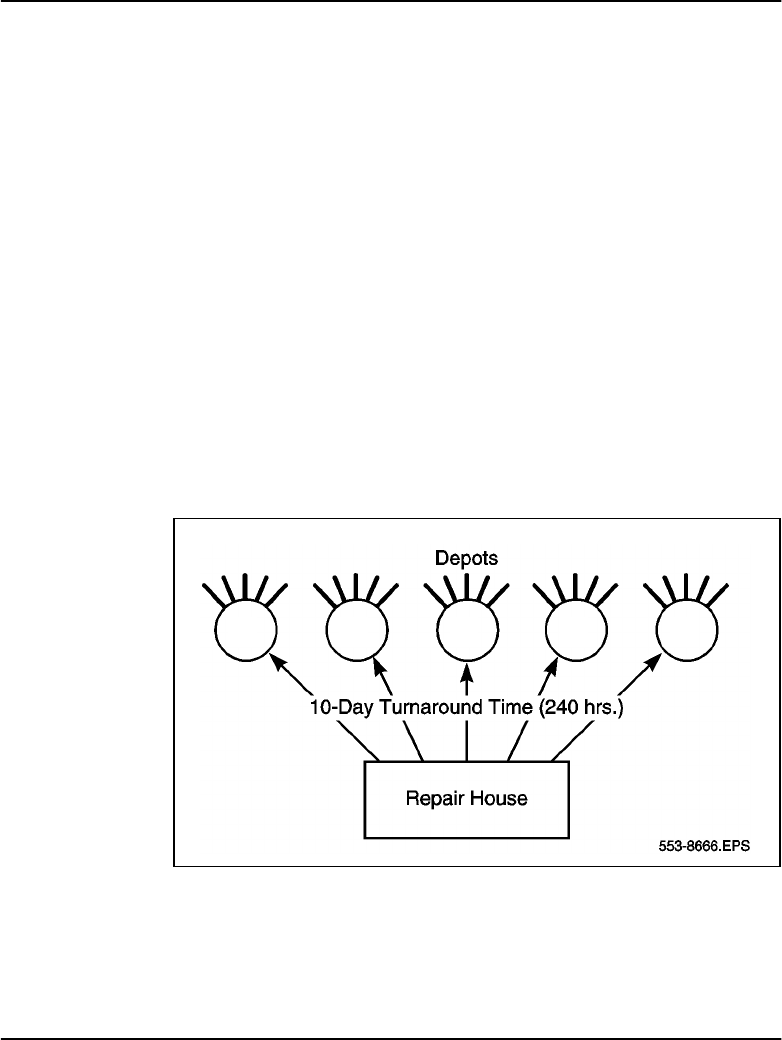
Page 188 of 544 Spares planning
553-3011-100 Standard 14.00 January 2002
Definitions and assumptions
Failure rate: Spares planning is based on the Failure rate of the replaceable
part. The failure rate is defined as the estimated number of failures for that
item during one million (10
6
) hours of operation.
Sparing interval: the sparing interval is the period of time that the stock of
items should last without being replenished. This period is assumed to be one
year after the installation of the system.
Stock confidence level: the stock confidence level is the allowed probability
of not going out of stock during the sparing interval. This is assumed to be
greater than 99.9 percent.
Turnaround time for repair: the turnaround time for repair is the length of
time it takes to repair a failed spares item.
The turnaround time from a repair house is estimated to be 10 working days
(240 hours). (See Figure 17).
Figure 17
Single depot or repair house service
The turnaround time from a centralized depot is estimated to be 2 working
days (48 hours). (See Figure 18.)
1 2 3 4 5



